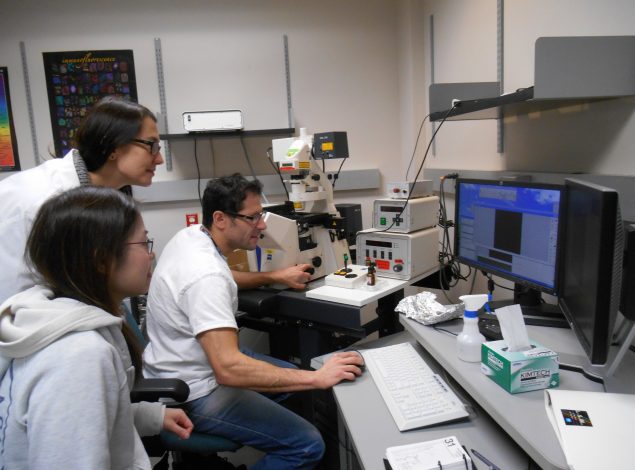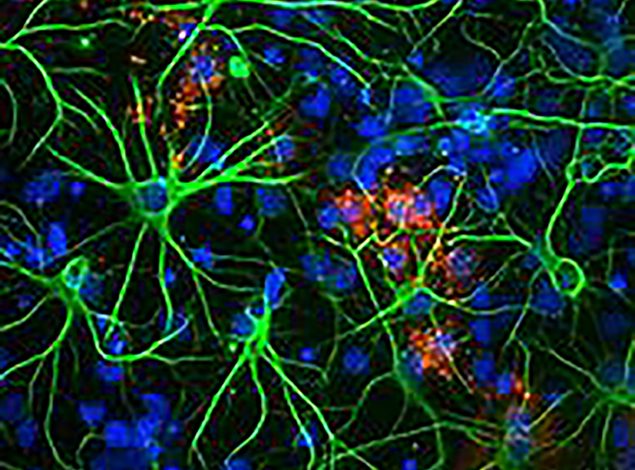About Us
About The CDR
A major emphasis of the CDR is “translational” research, which is aimed at understanding the molecular and cellular basis of Alzheimer’s disease (AD) and other neurodegenerative states (e.g., Parkinson’s disease (PD), Huntington disease (HD), amyotrophic lateral sclerosis (ALS), Lewy body dementia (DLB), stroke, and others) in order to develop accurate models. These models are then used to devise new strategies for early diagnosis (e.g., neuroimaging, biomarker identification) and treatment. Although it has not been fully resolved whether or not senile plaques or NFTs cause AD, lowering amounts of these abnormal proteins has been a key objective of many clinical drug trials and for pharmaceutical companies trying to develop new therapies to prevent or treat the disorder. CDR researchers have advanced this goal by identifying novel processes that can cause nerve cells to overexpress amyloid, thereby revealing new possibilities for blocking amyloid accumulation. Our researchers employ animal and cellular models of Aβ accumulation, tau accumulation, and Down syndrome (DS) to understand what is occurring in the brains of AD patients, with the goal of understanding the earliest changes that place people at risk, where therapeutic interventions are thought to be most efficacious. CDR investigators were some of the first to conduct studies identifying cholesterol-lowering drugs and estrogens as potential AD therapies. Collaborations in the CDR with researchers at NKI’s Center for Biomedical Imaging and Neuromodulation (C-BIN) yielded the first images of the brain in transgenic mice modeling the pathology of AD. NKI has become internationally recognized for the mouse models of Alzheimer’s developed by its researchers, which are now being used worldwide by pharmaceutical companies and scientists to screen potential therapeutic agents for Alzheimer’s and Parkinson’s disease.
Other research interests in the CDR include transgenic modeling of AD, PD, ALS and other neurodegenerative diseases; synapse physiology in memory processing; gene microarray analysis in neurodegeneration and neural plasticity; strategies to modulate Aβ and β-amyloid; molecular genetics of dementia; hormonal and cholesterol modulation therapy in neurodegenerative disease; and early detection of AD by MRI and biological markers.
Dementia and Alzheimer’s Disease
Dementia
Dementia is the loss of cognitive functioning – the ability to think, remember, problem solve or reason. These symptoms caused by disorders that affect the brain can range in severity to such an extent that they interfere with a person’s daily life and activities. Functions affected include memory, language skills, visual perception, problem-solving, self-management and the ability to focus and pay attention. Signs and symptoms of dementia result when once-healthy neurons (nerve cells) in the brain stop working, lose connections with other brain cells, and die. While dementia is more common with advanced age, it is not a normal part of aging. Though memory loss is a common symptom of dementia, memory loss alone is not classified as dementia. People with dementia experience problems with two or more brain functions, such as memory and language.
Dementia is caused by vascular disease-related processes and other neurodegenerative conditions. Alzheimer’s disease is the most common type of dementia. Risk factors for dementia include advancing age, stroke, high blood pressure, poorly controlled diabetes and thickening of blood vessel walls (atherosclerosis). Drugs are available to treat some of these diseases. While these drugs cannot cure dementia or repair brain damage, they may improve symptoms or slow down the progression of the disease.
Source: NIH: National Institute of Neurological Disorders and Stroke
Alzheimer’s Disease
Alzheimer’s disease (AD) is the most common form of dementia among older people. AD is a brain disorder that slowly destroys memory and thinking skills, and, eventually, the ability to carry out the simplest tasks. The disease begins slowly, involving parts of the brain that control thought, memory and language. Initially, people with AD may have trouble remembering things that happened recently or names of people they know. Over time, symptoms worsen and those with Alzheimer’s may not recognize family members and/or may experience trouble speaking, reading or writing. They may forget how to brush their teeth or comb their hair. As the disease progresses, they may become anxious or aggressive, or wander away from home. Eventually, they need total care. This can cause great stress for family members who must care for them.
AD usually begins after age 60. The risk goes up as you get older. Your risk is also higher if a family member has had the disease. Experts suggest that more than 6 million Americans, most of them age 65 or older, may have dementia caused by Alzheimer’s. AD is currently ranked as the sixth leading cause of death in the United States, but recent estimates indicate the disorder may rank third, just behind heart disease and cancer, as a cause of death for older people.
Source: NIH: National Institute of Aging

Affiliations

CDR Facilities

Collaborating Divisions

